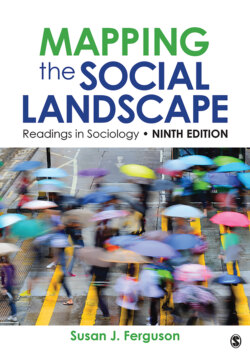Читать книгу Mapping the Social Landscape - Группа авторов - Страница 57
На сайте Литреса книга снята с продажи.
Results
ОглавлениеThe results of the present experiment support many commonly held conceptions of prison life and validate anecdotal evidence supplied by articulate exconvicts. The environment of arbitrary custody had great impact upon the affective states of both guards and prisoners as well as upon the interpersonal processes between and within those role-groups.
In general, guards and prisoners showed a marked decrease in positive affect or emotion, and their overall outlook became increasingly negative. As the experiment progressed, prisoners expressed intentions to do harm to others more frequently. For both prisoners and guards, self-evaluations were more deprecating as the experience of the prison environment became internalized.
Overt behavior was generally consistent with the subjective self-reports and affective expressions of the subjects. While guards and prisoners were essentially free to engage in any form of interaction (positive or negative, supportive or affrontive, etc.), the characteristic nature of their encounters tended to be negative, hostile, affrontive, and dehumanizing. Prisoners immediately adopted a generally passive style of responding, while guards assumed a very active initiative role in all interactions. Throughout the experiment, commands were the most frequent form of verbal behavior and, generally, verbal exchanges were strikingly impersonal, with few references to individual identity. Although it was clear to all subjects that the experimenters would not permit physical violence to take place, varieties of less direct aggressive behavior were observed frequently (especially on the part of guards). In fact, varieties of verbal affronts became the most frequent form of interpersonal contact between guards and prisoners.
The most dramatic evidence of the impact of the mock prison upon the participants was seen in the gross reactions of five prisoners who had to be released from the study because of extreme emotional depression, crying, rage, or acute anxiety. The pattern of symptoms was quite similar in four of the subjects and began as early as the second day of imprisonment. The fifth subject was released after being treated for a psychosomatic rash which covered portions of his body. Of the remaining prisoners, only two said they were unwilling to forfeit all the money they had earned in return for being “paroled” from the study. When the experiment was terminated prematurely after only six days, all the remaining prisoners were delighted by their unexpected good fortune; in contrast, most of the guards seemed to be distressed by the decision to stop the experiment. It appeared to us that the guards had become sufficiently involved in their roles so that they now enjoyed the extreme control and power they exercised and were reluctant to give it up. One guard, who did report being personally upset at the suffering of the prisoners, claimed to have considered asking to change his role to become one of them—but never did so. None of the guards ever failed to come to work on time for their shift, and indeed, on several occasions guards remained on duty voluntarily and uncomplainingly for extra hours—without additional pay.
The extreme reactions which emerged in both groups of subjects provide clear evidence of the power of the social forces operating in this pathological setting. There were, however, individual differences observed in styles of coping with this stressful experience, as well as varying degrees of success in adaptation to it. While all were somewhat adversely affected by it, half the prisoners did “endure” the oppressive atmosphere—at least in the sense that they remained until the study was completed. Not all of the guards resorted to the overt and inventive forms of hostility employed by others. Some guards were tough but fair (“played by the rules”), some went far beyond their roles to engage in cruelty and harassment, while a few were passive and rarely instigated any coercive control over the prisoners. It is important to emphasize, however, that at some time during the six days all guards participated in what could be characterized as sadistic treatment of prisoners….
